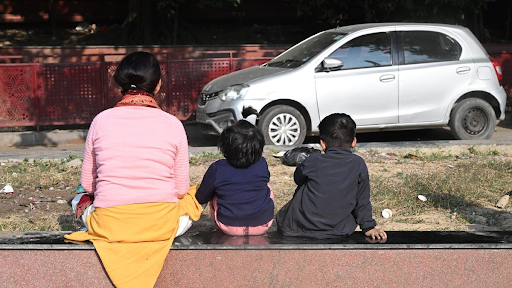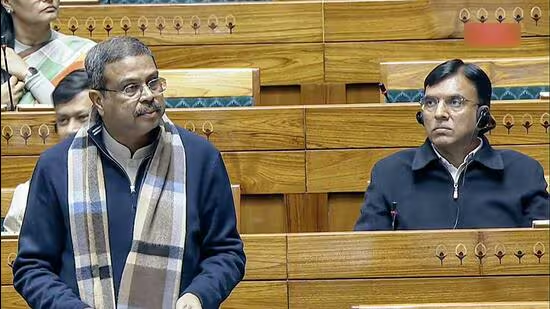Copyright infringement not intended
Picture Courtesy: The Hindu
Context:
Recent satellite data shows that the area affected by stubble burning in three major Punjab districts — Amritsar, Tarn Taran, and Ferozepur — has fallen by nearly 20% compared to last year.
Current Status:
- Punjab has reported a 70 % drop in stubble‐burning incidents from 36,551 to 10,479.
- Punjab has an action plan of ₹500 crore to manage crop residue and curb stubble burning, including subsidies for crop‐residue management (CRM) machines. (Source: PIB).
- Over 1.48 lakh machines (super‐seeders, mulchers etc.) have been distributed so far under the government’s CRM scheme.
- The state amended its Industrial & Business Development Policy (2022) in 2025 to introduce capital subsidies for industrial boilers using paddy‐straw as fuel, promoting ex‐situ residue use.
Picture Courtesy: Etv
What is Stubble Burning?
Stubble burning is the practice of setting fire to crop residue—mainly the stalks and straw that remain in the fields after harvesting grains such as paddy (rice) or wheat.
Farmers do this primarily to clear the fields quickly for the next round of sowing, especially in regions where the time gap between two cropping seasons is short.
Why farmers still burn Stubble?
Structural constraints
- The paddy–wheat cropping cycle in north India, especially Punjab and Haryana, leaves a very short turnaround period between harvest and sowing.
- State policies that promote paddy cultivation through free electricity and assured procurement have entrenched this cycle.
Economic limitations
- Crop residue management (CRM) machines, despite subsidies, remain financially inaccessible to small and marginal farmers.
- There is a lack of organized markets or industries to absorb paddy straw for alternative uses like biofuel, compost, or paper.
Technological and Logistical Gaps
- Inadequate number of custom hiring centres and CRM machines in rural areas.
- Poor logistics for collection, storage, and transportation of crop residue to potential users such as power plants or biogas units.
Policy Challenges
- Implementation gaps between policy design and ground-level action—penalties are rarely enforced.
- Over-reliance on seasonal interventions instead of long-term structural reforms like crop diversification and sustainable land use.
Regions most affected
- Punjab
- Haryana
- Western Uttar Pradesh
- Parts of Delhi and Rajasthan
Reasons behind decline in Stubble Burning:
- Wider use of machinery through custom hiring centres (CHCs) for small and marginal farmers.
- Adoption of short-duration paddy varieties which allows more time for wheat sowing and reducing the need for burning.
- Development of ex-situ solutions—using crop residue for bioenergy, compost, and packaging materials.
- Awareness campaigns by government, NGOs, and Krishi Vigyan Kendras have highlighted health and soil impacts of burning.
- Delayed monsoon and floods (as in 2025) postponed harvesting which naturally reduces the burning period.
- Incentives for alternative uses of straw (bio-CNG plants, biomass power generation).
Why we are not able to eliminate stubble burning?
Stubble burning is not just an environmental concern—it reflects structural distortions in India’s agricultural system, economic compulsions of farmers, and policy design limitations.
- The dominance of the paddy–wheat cropping pattern in north India, driven by Minimum Support Price (MSP) and procurement policies, creates a narrow harvest-to-sowing window.
- Lack of agro-diversification and region-specific cropping patterns perpetuates residue generation on a massive scale.
- Market mechanisms for crop residue utilization (bioenergy, paper, packaging, fodder) remain underdeveloped.
- Insufficient Custom Hiring Centres (CHCs) and poor straw collection and storage infrastructure hinder adoption.
- Lack of data integration and monitoring systems leads to underreporting and ineffective enforcement.
- Stubble burning has become a socially normalized practice, passed down across generations.
Multi-dimensional implication of Stubble burning:
Environmental Impact
- Releases particulate matter (PM2.5, PM10), CO, NOx → contributes to smog and climate change.
- Destroys soil fertility and organic matter.
- Kills soil microbes and small fauna, affecting biodiversity.
Health Impact
- Causes respiratory diseases like asthma, bronchitis, COPD.
- Increases cardiovascular risks.
- Leads to eye irritation and skin problems.
Economic Impact
- Provides short-term savings for farmers but leads to long-term soil degradation, reducing crop yields.
- Healthcare costs rise due to pollution-related diseases.
- Pollution affects transport, tourism, and outdoor businesses.
Social Impact
- Triggers public health crises in surrounding communities.
- Possible farmer migration due to declining soil productivity.
- Conflicts due to legal action or fines for burning.
Policy & Governance Impact
- Need for real-time monitoring via satellites and enforcement.
- Subsidies and incentives for eco-friendly machinery.
- Balancing farmer livelihood and environmental protection is critical.
What we can do next?
- Crop Diversification: Encourage a gradual shift from paddy to less residue-intensive crops such as maize, pulses, or oilseeds through assured procurement, MSP support, and market linkages.
- Promote Sustainable Farming Systems: Incentivize zero-till farming, integrated residue management, and climate-resilient agriculture
- Scale Up Residue Management Technologies: Expand access to Happy Seeder, Super Seeder, and Mulchers through Custom Hiring Centres (CHCs) and farmer cooperatives.
- Promote Ex-Situ Utilization: Develop supply chains for using straw in bio-CNG plants, biomass power, paper, and packaging industries.
- Financial Incentives: Offer direct benefit transfers or carbon credits for farmers adopting sustainable residue management.
- Capacity Building: Continuous training via Krishi Vigyan Kendras (KVKs) and demonstration projects to show economic and soil benefits.
- Promote carbon farming and soil health restoration programs to turn residue into a resource.
Case Studies
Punjab’s Happy Seeder Initiative
· Initiated: Under the Crop Residue Management Scheme (2018–19).
· Approach:
o Subsidized Happy Seeders for in-situ residue management.
o Custom Hiring Centres (CHCs) made machines available to small farmers.
· Outcome:
o Reduction in burning incidents by over 40% in pilot districts like Ludhiana and Sangrur (as per Punjab Agriculture Department data).
o Improved soil organic content and reduced fertilizer use.
Pusa Bio-Decomposer (Delhi NCR, 2020 onwards)
· Developed by Indian Agricultural Research Institute (IARI), Pusa campus, Delhi.
· What it does: A microbial solution that decomposes stubble within 20–25 days, converting it into compost.
· Adoption: Implemented by Delhi, Haryana, and western UP governments.
· Result: Reduction in localised burning; improved soil health.
Haryana’s Crop Diversification and “Mera Pani Meri Virasat” Scheme
· Encourages farmers to shift from paddy to less water-intensive crops like maize, pulses, and cotton.
· Reduces paddy residue generation at the source.
|
Conclusion:
Stubble burning is not merely an act of environmental negligence but a reflection of deep-rooted agrarian, economic, and policy challenges. While technological and regulatory interventions have shown partial success, sustainable change demands a systemic transformation of India’s agricultural landscape.
A long-term solution lies in empowering farmers through incentives, crop diversification, affordable technology, and market-based mechanisms that make residue management economically rewarding. The focus must shift from punishment to participation, from enforcement to enabling, ensuring that environmental goals align with farmers’ livelihoods.
Ultimately, addressing stubble burning is integral to achieving clean air, soil health, water security, and climate resilience—all pillars of sustainable rural development.
Source: The Hindu
|
Practice Question
Q. Stubble burning in India is a multidimensional problem with environmental, health, and socio-economic implications.” Critically examine the causes and consequences of stubble burning and suggest viable solutions. (250 words)
|
Frequently Asked Questions (FAQs)
Stubble burning refers to the practice of setting fire to crop residue (mainly paddy straw) left in the field after harvest, to quickly clear land for the next crop.
- Primarily Punjab, Haryana, Western Uttar Pradesh, and parts of Bihar.
- It is most prevalent in north-western India, where rice-wheat rotation is common.
- Short window between harvesting paddy and sowing wheat (~15–20 days).
- High cost or limited availability of machinery for residue management.
- Lack of awareness and limited economic incentive for alternative uses.









